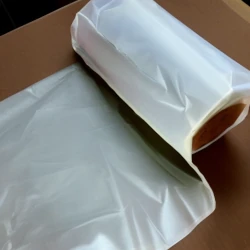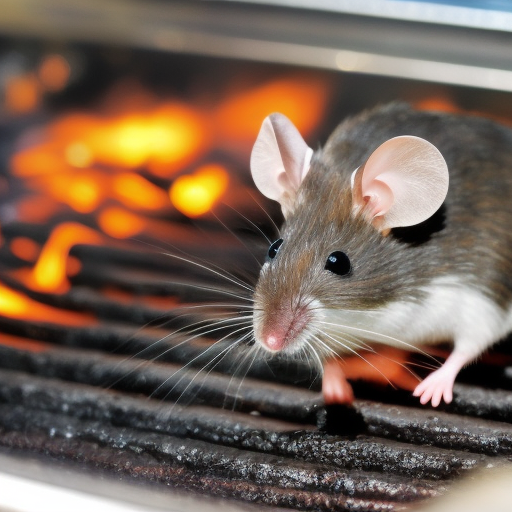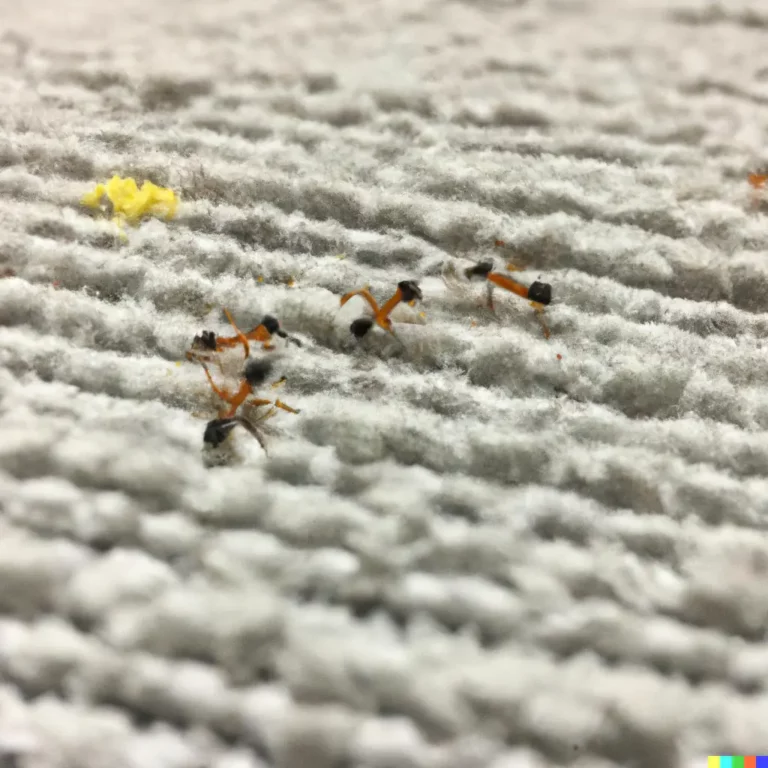Bed bug how to get rid of them yourself
As you lay in bed, you feel something crawling on your skin. You turn on the light and see tiny, reddish-brown bugs scattered across your sheets. Panic sets in as you realize you have a bed bug infestation.
But don’t worry, you’re not alone. Bed bugs are a common problem that can affect anyone, regardless of how clean or tidy their home is. These tiny pests are great at hiding and can be difficult to get rid of, but with the right knowledge and approach, you can effectively eliminate them from your home.
So, what are bed bugs and how do they end up in your bed?
What are bed bugs?
Bed bugs are small, wingless insects that feed on the blood of humans and animals. They are about the size of an apple seed and have a flat, oval-shaped body. Bed bugs are reddish-brown in color and are usually active at night, which is why they are often found in beds.
Bed bugs are not known to transmit diseases, but their bites can be itchy and uncomfortable. They can also cause anxiety and disrupt sleep, which can affect your overall well-being.
Bed bugs life cycle
Bed bugs have a complex life cycle that involves several stages of development.
The bed bug life cycle begins with an egg, which is laid by the female bed bug and is about the size of a grain of salt. The eggs are usually laid in small clusters and are often found in cracks, crevices, and other hard-to-reach areas. It takes about a week for the eggs to hatch into nymphs, which are small, immature bed bugs.
The nymphs will go through several stages of development, molting and shedding their exoskeleton as they grow. During this time, they will feed on the blood of humans or animals to nourish their development. It takes about a month for a bed bug to reach adulthood, at which point it will mate and begin the cycle again.
Bed bugs can survive for several months without a blood meal, but they will usually try to feed at least once a week if a host is available. Understanding the bed bug life cycle can help you to identify and eliminate the pests from your home.
How fast do bed bugs spread
Bed bugs can spread relatively quickly, especially in multi-unit buildings or in situations where people are frequently moving in and out. These pests are excellent hitchhikers and can easily be transported from place to place on clothing, luggage, and other personal items. They can also spread through shared walls, floors, and ceilings in multi-unit buildings, such as apartments, hotels, and dormitories.
Bed bugs reproduce rapidly, with a female bed bug laying up to 500 eggs in her lifetime. These eggs can hatch into nymphs within a week, and the nymphs can reach adulthood and begin reproducing within a month. This rapid reproduction can lead to a rapid spread of bed bugs in a short period of time.
It’s important to be proactive in preventing the spread of bed bugs and to take steps to eliminate them as soon as they are detected. By following proper pest control measures and practicing prevention techniques, you can help to reduce the risk of a bed bug infestation and keep these pests from spreading.
How do bed bugs get into your home?
Bed bugs are excellent hitchhikers and can easily be transported from place to place on clothing, luggage, and other personal items. They can also be introduced into your home through used furniture, such as beds, couches, and dressers.
Bed bugs can also spread through multi-unit buildings, such as apartments, hotels, and dormitories, by traveling through shared walls, floors, and ceilings.
How do you know if you have bed bugs?
One of the most obvious signs of a bed bug infestation is the presence of bites on your skin. Bed bug bites are typically found on exposed areas of skin, such as the arms, legs, and face. The bites are usually red, raised, and itchy and can appear in a line or cluster.
Other signs of a bed bug infestation include:
- Small, rust-colored stains on bed sheets and mattress
- A sweet, musty smell in the area where bed bugs are present
- Tiny, white eggs or eggshells in crevices or on fabric
- Live or dead bed bugs on the bed or in other areas of the room
How do you get rid of bed bugs yourself?
Getting rid of bed bugs can be a challenging and time-consuming process, but it is possible with the right approach. Here are some steps to help you eliminate bed bugs from your home:
1. Clean and declutter your home
The first step in getting rid of bed bugs is to declutter and clean your home thoroughly. Remove any unnecessary items from the affected area and wash all bedding, clothing, and other fabric items in hot water and dry on high heat for at least 30 minutes. Vacuum the entire area, including the walls and floors, to remove any eggs or debris.
2. Use a bed bug spray or powder
There are several products on the market specifically designed to kill bed bugs, including sprays and powders. These products contain chemicals that are toxic to bed bugs and can be applied to surfaces and crevices where the pests may be hiding. Use these sparingly as they may be toxic to humans and pets too. Calling a professional exterminator is probably better for this step.
It’s important to follow the instructions on the product label carefully and use caution when applying these products. Some products may not be safe for use on certain materials, such as leather or certain types of fabric.
WARNINGS : DO NOT SPRAY IN BEDDINGS AND BED AREA PLUS OTHER WARNINGS
It’s important to use caution when using bed bug sprays and powders, as these products contain chemicals that can be harmful to humans and pets if ingested or inhaled. Some common side effects of exposure to these chemicals include respiratory problems, headaches, and skin irritation. It’s also important to keep children and pets away from treated areas until the product has dried and the area has been ventilated. In some cases, it may be necessary to evacuate the area during and immediately after the treatment process. It’s always best to follow the instructions on the product label and use caution when applying these products to ensure the safety of yourself and others. If you have concerns about using chemical-based products, there are also natural alternatives available that may be safer for use in your home. People have died from using pesticides in beds.
3. Use bed bug-proof encasements
Bed bug-proof encasements are special covers that fit over your mattress and box spring, creating a barrier between you and the bed bugs. These encasements are made of a thin, stretchy material that is impermeable to bed bugs, making it difficult for them to get through. They are also machine washable, making them easy to clean and maintain.
Using bed bug-proof encasements is an effective way to prevent bed bugs from getting into your bed and can help to prevent re-infestations.
4. Use traps and interceptors
Traps and interceptors (affiliate link) are devices that can be placed under the legs of your bed or other furniture to catch and prevent bed bugs from crawling up. These devices are typically made of a sticky material that the bed bugs get stuck to as they try to climb up.
Using traps and interceptors can be an effective way to monitor the presence of bed bugs and prevent them from reaching you while you sleep.
5. Use steam to get rid of bed bugs as a natural treatment
Using steam to get rid of bed bugs can be an effective and natural method of pest control. Steam cleaners (affiliate link) generate hot, high-pressure steam that can kill bed bugs and their eggs on contact. The steam can also penetrate into cracks and crevices where bed bugs may be hiding, making it a useful tool for reaching hard-to-reach areas.
To use steam to get rid of bed bugs, you will need a steam cleaner with a narrow nozzle and a high temperature setting. Start by thoroughly vacuuming the affected area to remove any visible bed bugs and eggs. Then, use the steam cleaner to target the cracks, crevices, and other areas where bed bugs may be hiding. Be sure to hold the nozzle close to the surface and move it slowly to ensure that the steam reaches all areas.
Using steam to get rid of bed bugs can be an effective and safe method of pest control, but it’s important to use caution and follow the manufacturer’s instructions for the steam cleaner to avoid injury like skin burning or damage to your home. If you are unsure about using steam or if you have a severe infestation, it may be best to seek the help of a professional exterminator.
6. Consider hiring a professional exterminator
If you have a severe bed bug infestation or if you have tried the above methods and are still struggling with the pests, you may want to consider hiring a professional exterminator. Professional exterminators are trained to identify and eliminate bed bugs using specialized equipment and chemicals that are not available to the general public.
While hiring a professional exterminator can be more expensive than trying to get rid of bed bugs on your own, it can be a more effective and efficient solution, particularly for larger infestations.
How to prevent bed bugs from returning
After you have successfully eliminated bed bugs from your home, it’s important to take steps to prevent them from returning. Here are some tips to help you prevent a future infestation:
- Regularly wash and dry your bedding on high heat
- Vacuum your home regularly
- Inspect used furniture and clothing before bringing it into your home
- Use bed bug-proof encasements on your mattress and box spring
- Avoid bringing luggage or other personal items into your bedroom
By following these prevention tips, you can reduce the risk of a future bed bug infestation and enjoy a peaceful, bite-free sleep.
In conclusion
Bed bugs can be a frustrating and stressful problem, but with the right knowledge and approach, you can effectively get rid of them and prevent them from returning. Be sure to follow the steps outlined above and don’t hesitate to seek professional help if needed. With a little effort and perseverance, you can enjoy a bed bug-free home and a good night’s sleep.
Q: How do I know if I have bed bugs?
A: One of the most obvious signs of a bed bug infestation is the presence of bites on your skin. Bed bug bites are typically found on exposed areas of skin, such as the arms, legs, and face. The bites are usually red, raised, and itchy and can appear in a line or cluster. Other signs of a bed bug infestation include small, rust-colored stains on bed sheets and mattress, a sweet, musty smell in the area where bed bugs are present, tiny, white eggs or eggshells in crevices or on fabric, and live or dead bed bugs on the bed or in other areas of the room.
Q: How do I get rid of bed bugs?
A: Getting rid of bed bugs can be a challenging and time-consuming process, but it is possible with the right approach. Some steps to help you eliminate bed bugs from your home include cleaning and decluttering the affected area, using a bed bug spray or powder, using bed bug-proof encasements, using traps and interceptors, and considering hiring a professional exterminator.
Q: Can I use a home remedy to get rid of bed bugs?
A: While there are many home remedies that claim to be effective in getting rid of bed bugs, the efficacy of these methods is often questionable. Some common home remedies include using rubbing alcohol, essential oils, and diatomaceous earth, but there is limited evidence to support their effectiveness. It’s important to be cautious when using home remedies, as some may be toxic or harmful to humans and pets. If you have a bed bug infestation, it’s usually best to use a proven method of pest control, such as a bed bug spray or powder, or to seek the help of a professional exterminator.
Q: How can I prevent bed bugs from returning?
A: To prevent bed bugs from returning, it’s important to follow some basic prevention measures, such as regularly washing and drying your bedding on high heat, vacuuming your home regularly, inspecting used furniture and clothing before bringing it into your home, using bed bug-proof encasements on your mattress and box spring, and avoiding bringing luggage or other personal items into your bedroom. By following these prevention tips, you can reduce the risk of a future bed bug infestation and enjoy a peaceful, bite-free sleep.






